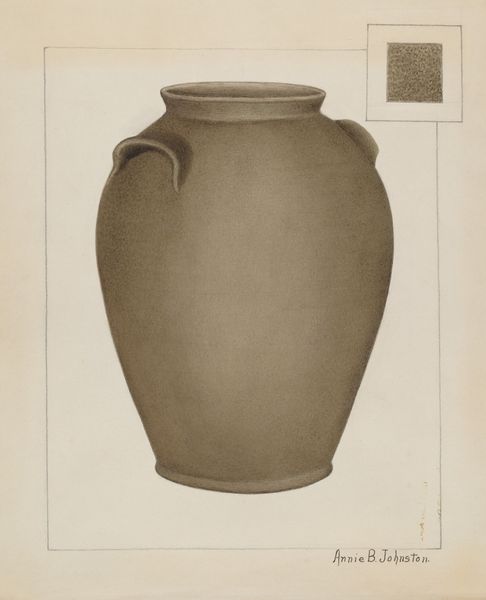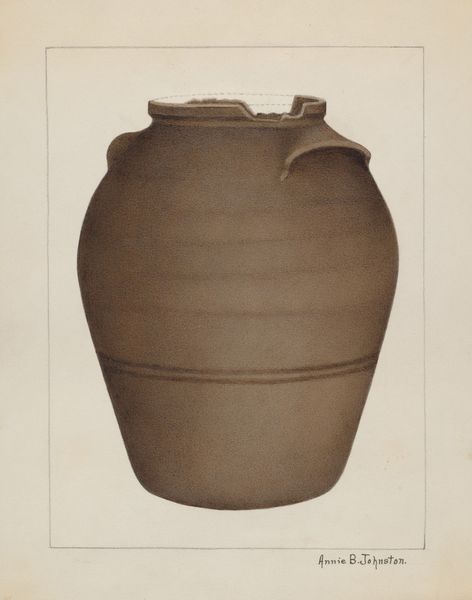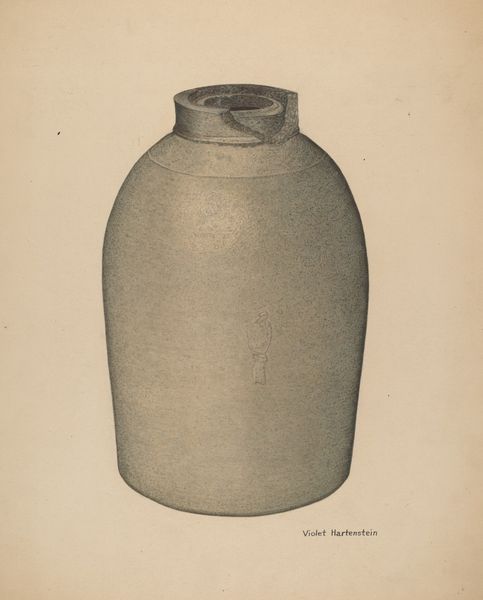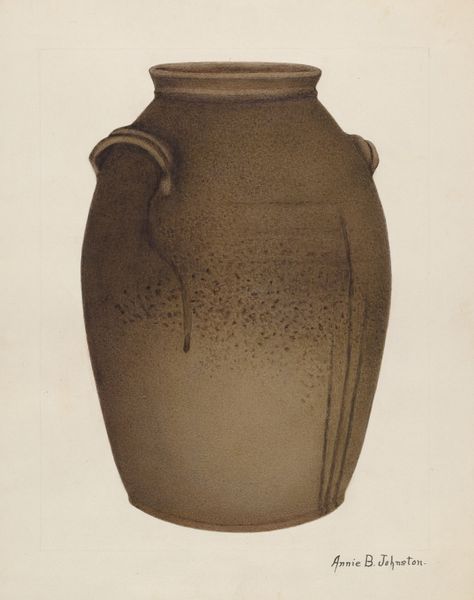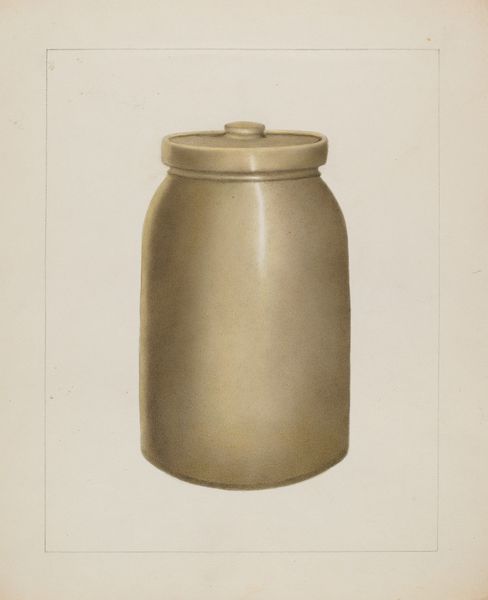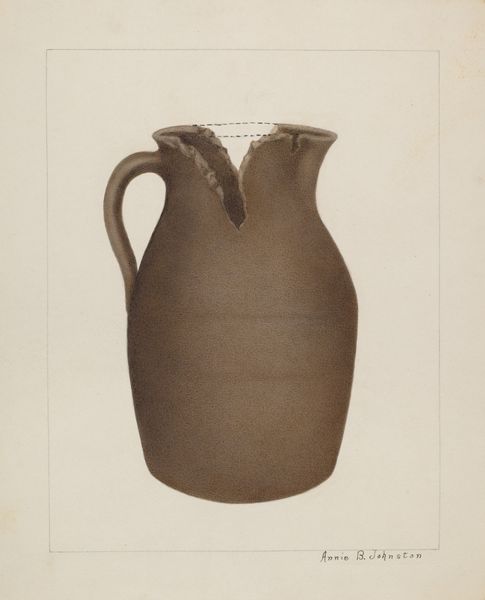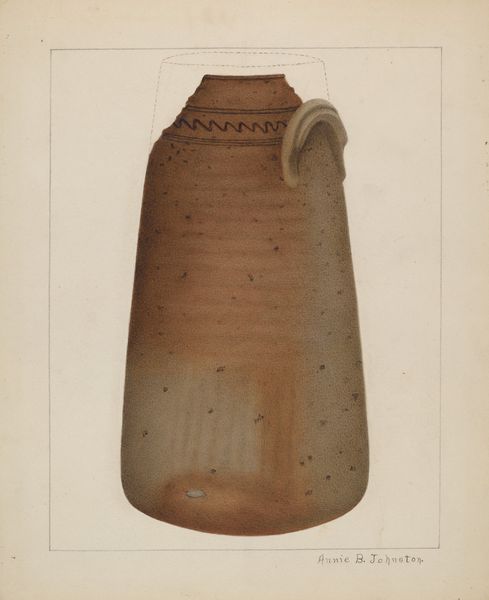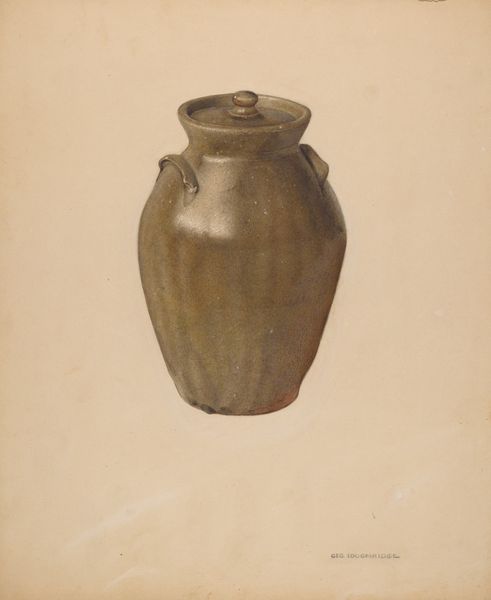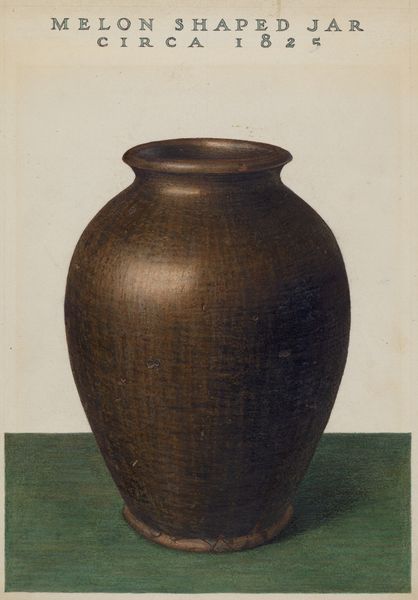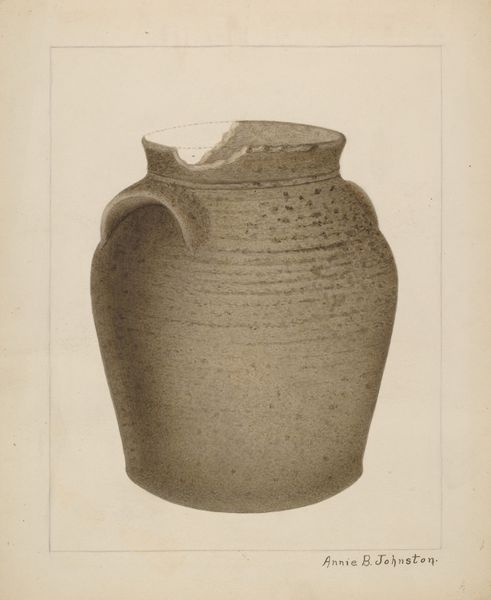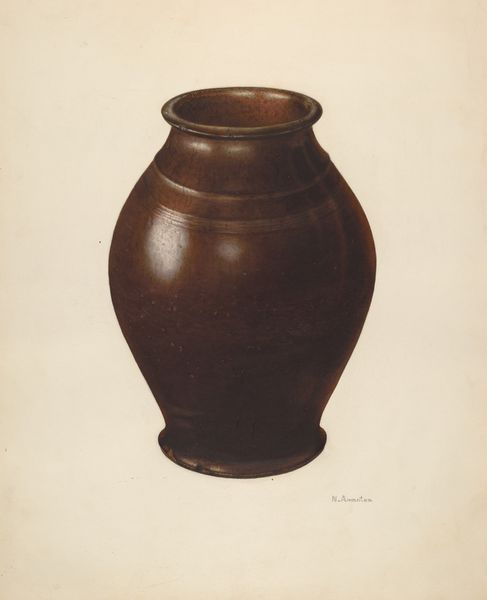
drawing, watercolor
#
drawing
#
watercolor
#
watercolour illustration
#
watercolor
Dimensions: overall: 28.2 x 23 cm (11 1/8 x 9 1/16 in.) Original IAD Object: 9 1/2" in diameter; 17 1/2" high
Copyright: National Gallery of Art: CC0 1.0
Curator: What we have here is "Stoneware Churn," a watercolor and drawing work by Annie B. Johnston, created around 1937. Editor: It feels so simple, almost austere. The muted color palette really emphasizes the form, but in a way that feels like it’s almost fading. Curator: Let's consider the social context: in the 1930s, there was a profound tension between mass-produced goods and handmade objects. A churn like this, or an image of one, speaks to that relationship, especially for women whose labor was directly involved in the dairy process. Editor: Right. And the rendering is interesting because it feels almost like a documentary photograph, yet it's meticulously painted. You can see the careful building of tone, giving volume and presence to what might otherwise be a rather mundane, functional object. There's a labor of representation there. Curator: Precisely. We can think of this image as embodying a broader discourse surrounding domestic labor and female identity during the Depression era. How might this representation function within a broader context of the rural South, issues of economic precarity, race, and gender expectations of the time? Editor: The churn itself— the form is so direct, referencing an earlier era of craft, and that idea of self-sufficiency. Stoneware isn't just a material, it's connected to traditions, and the passing down of skills that shaped rural communities. Curator: Exactly, by situating it within a complex cultural tapestry, we can begin to question whose labor and experience the object embodies and represents. There’s a narrative here regarding the relationship between humans, production and object. Editor: It's almost as if Johnston wanted to preserve something essential about a way of life that was slipping away. The object remains on paper as if evidence of something. I find this image quietly haunting. Curator: It makes you consider the meaning of the image, what it is and represents beyond merely an object depicted on paper. Editor: Yes, It underscores the deep material culture embedded within these often overlooked objects.
Comments
No comments
Be the first to comment and join the conversation on the ultimate creative platform.
